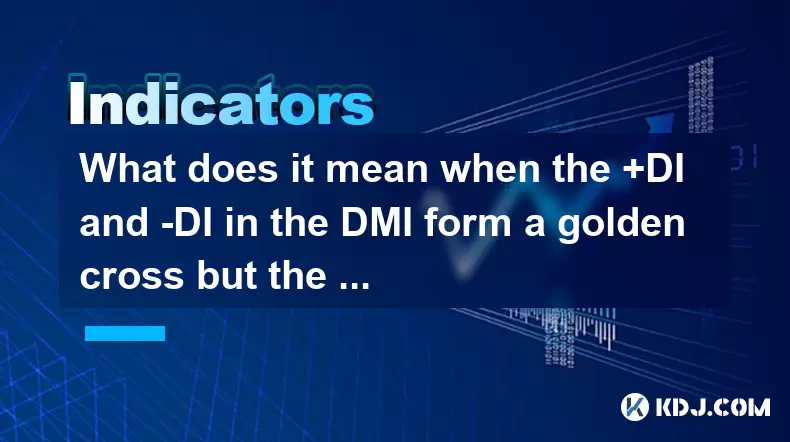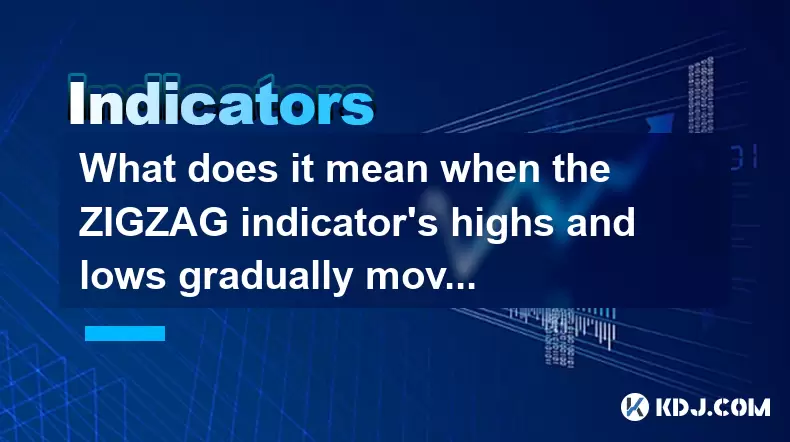-
 Bitcoin
Bitcoin $116900
0.00% -
 Ethereum
Ethereum $4280
5.48% -
 XRP
XRP $3.265
-1.45% -
 Tether USDt
Tether USDt $1.000
-0.01% -
 BNB
BNB $807.0
1.41% -
 Solana
Solana $183.1
2.93% -
 USDC
USDC $0.9999
0.00% -
 Dogecoin
Dogecoin $0.2440
6.50% -
 TRON
TRON $0.3357
-0.88% -
 Cardano
Cardano $0.8178
2.63% -
 Hyperliquid
Hyperliquid $44.13
7.45% -
 Chainlink
Chainlink $21.39
9.09% -
 Stellar
Stellar $0.4524
-0.84% -
 Sui
Sui $3.957
2.13% -
 Bitcoin Cash
Bitcoin Cash $572.7
-2.54% -
 Hedera
Hedera $0.2671
1.54% -
 Avalanche
Avalanche $24.77
4.17% -
 Ethena USDe
Ethena USDe $1.001
0.02% -
 Litecoin
Litecoin $122.3
-1.94% -
 Toncoin
Toncoin $3.432
2.26% -
 UNUS SED LEO
UNUS SED LEO $9.007
0.49% -
 Shiba Inu
Shiba Inu $0.00001396
5.26% -
 Uniswap
Uniswap $11.09
1.64% -
 Polkadot
Polkadot $4.155
4.57% -
 Dai
Dai $1.000
0.00% -
 Pepe
Pepe $0.00001253
5.11% -
 Cronos
Cronos $0.1588
2.67% -
 Bitget Token
Bitget Token $4.512
0.05% -
 Monero
Monero $275.0
0.64% -
 Ethena
Ethena $0.7527
15.10%
What does it mean when the +DI and -DI in the DMI form a golden cross but the ADX continues to decline?
A +DI golden cross with declining ADX may signal weak bullish momentum, suggesting caution as the trend lacks strength despite positive directional bias.
Aug 10, 2025 at 01:01 am

Understanding the DMI and Its Components
The Directional Movement Index (DMI) is a technical analysis tool used in cryptocurrency trading to identify the strength and direction of a trend. It comprises three lines: the +DI (Positive Directional Indicator), the -DI (Negative Directional Indicator), and the ADX (Average Directional Index). The +DI measures the strength of upward price movement, while the -DI reflects the strength of downward movement. The ADX, on the other hand, does not indicate direction but quantifies the overall strength of a trend regardless of whether it is bullish or bearish.
When traders observe a golden cross between the +DI and -DI, it means that the +DI line crosses above the -DI line. This crossover is typically interpreted as a bullish signal, suggesting that upward momentum is gaining strength over downward momentum. However, the interpretation becomes more complex when this bullish crossover occurs alongside a declining ADX. This scenario requires deeper analysis of what each component is signaling and how they interact.
What a Golden Cross Between +DI and -DI Signifies
A golden cross in the DMI—where +DI crosses above -DI—is traditionally seen as a potential entry signal for long positions in cryptocurrency markets. This crossover indicates that buying pressure is beginning to dominate selling pressure. In trending markets, especially during strong bull runs in assets like Bitcoin or Ethereum, such crossovers often precede price increases.
However, the reliability of this signal depends heavily on the context provided by the ADX. A rising ADX would confirm that the emerging trend has strong momentum and is likely to persist. But when the ADX is declining, it introduces uncertainty. The decline suggests that, despite the shift in directional bias toward bullishness, the overall trend strength is weakening. This could mean the market is transitioning into a consolidation phase or losing momentum after a prior move.
Interpreting a Declining ADX Amid a Golden Cross
The ADX measures trend strength, not direction. When the ADX line is falling, it indicates that the market is becoming less directional. A value below 20 is generally considered to reflect a weak or non-existent trend. Therefore, even if the +DI crosses above the -DI, a declining ADX warns that the bullish momentum may lack conviction.
In the context of cryptocurrency trading, this scenario often occurs after a pullback or correction in a larger downtrend. For example, after a sharp drop in Solana or Binance Coin, a temporary rebound might trigger the +DI to rise above the -DI. However, if the broader market sentiment remains bearish and volume is low, the ADX will continue to fall, signaling that this upward move is likely a short-term correction rather than the start of a new uptrend.
Traders should be cautious in such conditions. A golden cross with a falling ADX may result in false breakouts or short-lived rallies that quickly reverse. This is particularly common in highly volatile crypto markets where price movements can be driven by sentiment, news, or whale activity rather than sustained institutional buying.
How to Respond: Practical Trading Steps
When encountering a +DI/-DI golden cross with a declining ADX, traders should follow a structured approach to avoid premature entries:
- Confirm the ADX level: Check if the ADX is below 20 or in a clear downtrend. If so, treat the golden cross as a low-confidence signal.
- Analyze price action: Look for confirmation from candlestick patterns, such as bullish engulfing or hammer formations, near key support levels.
- Check volume indicators: Rising volume during the +DI crossover increases the likelihood of a valid move. Low volume suggests weak participation.
- Use additional indicators: Combine DMI with tools like RSI or MACD to assess whether the market is oversold and due for a bounce.
- Set tight risk parameters: If entering a long position, place a stop-loss just below the recent swing low to limit downside risk.
- Avoid aggressive position sizing: Given the weak trend strength, limit exposure to prevent large losses if the move fails.
This cautious strategy helps traders navigate ambiguous signals without overcommitting capital to potentially unreliable setups.
Real-World Example in Cryptocurrency Markets
Consider a scenario in Cardano (ADA) trading. Suppose ADA has been in a downtrend for several weeks, and the DMI shows -DI above +DI with ADX rising above 25, indicating a strong bearish trend. Suddenly, ADA rebounds 15% over three days. During this rebound, the +DI crosses above the -DI, forming a golden cross. However, the ADX line, which had peaked at 30, begins to decline steadily and drops to 18.
In this case, the golden cross reflects short-term bullish momentum, possibly due to profit-taking by shorts or a wave of retail buying. But the falling ADX suggests the broader downtrend is still intact and the rally lacks institutional or sustained buying pressure. Traders who enter long positions based solely on the crossover may face losses when the price resumes its downward trajectory after a few days.
This example highlights the importance of not relying on a single indicator and the necessity of evaluating confluence factors such as volume, support/resistance levels, and broader market conditions.
Frequently Asked Questions
Q: Can a golden cross in DMI ever be reliable when ADX is declining?
Yes, but only in specific contexts. If the market has been in a prolonged consolidation and the ADX has been below 20 for an extended period, a +DI crossing above -DI might signal the early stages of a new trend. However, confirmation from price breaking out of a range with volume is essential before acting.
Q: What timeframes are best for analyzing DMI signals in crypto?
The 4-hour and daily charts provide the most reliable DMI readings for swing and position traders. Shorter timeframes like 5-minute or 15-minute charts often produce noisy and false signals due to crypto’s high volatility.
Q: Should I exit a long position if ADX starts declining after a golden cross?
Not necessarily. A declining ADX after entry suggests weakening momentum, which calls for tighter stop-loss management and profit-taking at key resistance levels. It doesn’t automatically mean the trend is reversing, but it does warrant increased caution.
Q: How does DMI compare to MACD in spotting reversals?
DMI focuses on trend strength and direction, while MACD emphasizes momentum and divergence. DMI is better for identifying the start of trends, whereas MACD excels at detecting momentum shifts. Using both together can improve signal accuracy in crypto trading.
Disclaimer:info@kdj.com
The information provided is not trading advice. kdj.com does not assume any responsibility for any investments made based on the information provided in this article. Cryptocurrencies are highly volatile and it is highly recommended that you invest with caution after thorough research!
If you believe that the content used on this website infringes your copyright, please contact us immediately (info@kdj.com) and we will delete it promptly.
- Penny Crypto Dreams: Can XRP Reach $10,000? A Look at LILPEPE and the Meme Coin Mania
- 2025-08-10 04:50:11
- World Liberty Financial's $1.5B Fundraise: What's the Deal with the WLFI Token?
- 2025-08-10 04:30:12
- Ozak AI, Tokens, and Investment: What's the Buzz?
- 2025-08-10 04:35:15
- Pepe Coin Price Prediction: Will the Memecoin Frog Leap to 100x Gains?
- 2025-08-10 04:50:11
- Bitcoin, Crypto Policy, and the Treasury: Separating Fact from Fiction in the Digital Age
- 2025-08-10 04:55:12
- Polkadot, Remittix, and Analyst Buzz: What's the Smart Money Doing?
- 2025-08-10 05:10:12
Related knowledge

What does it mean when the price is trading above the SAR indicator but the red dots are densely packed?
Aug 09,2025 at 11:49pm
Understanding the SAR Indicator and Its Visual SignalsThe SAR (Parabolic Stop and Reverse) indicator is a technical analysis tool used primarily to de...

What does it mean when the MACD histogram continues to shorten but the price reaches a new high?
Aug 09,2025 at 09:29pm
Understanding the MACD Histogram and Its ComponentsThe MACD (Moving Average Convergence Divergence) indicator is a widely used technical analysis tool...

What does it mean when the Triple Moving Average (TRIX) turns downward but the price doesn't fall?
Aug 09,2025 at 12:42pm
Understanding the Triple Moving Average (TRIX) IndicatorThe Triple Moving Average, commonly known as TRIX, is a momentum oscillator designed to filter...

What does it mean when the 10-day and 30-day moving averages repeatedly intertwine?
Aug 10,2025 at 02:42am
Understanding Moving Averages in Cryptocurrency TradingMoving averages are among the most widely used technical indicators in the cryptocurrency tradi...

What does it mean when the CCI indicator continues to hover below -100?
Aug 10,2025 at 04:21am
Understanding the CCI Indicator and Its Baseline ValuesThe Commodity Channel Index (CCI) is a momentum-based oscillator used in technical analysis to ...

What does it mean when the ZIGZAG indicator's highs and lows gradually move downwards?
Aug 10,2025 at 02:14am
Understanding the ZIGZAG Indicator in Cryptocurrency TradingThe ZIGZAG indicator is a popular technical analysis tool used by cryptocurrency traders t...

What does it mean when the price is trading above the SAR indicator but the red dots are densely packed?
Aug 09,2025 at 11:49pm
Understanding the SAR Indicator and Its Visual SignalsThe SAR (Parabolic Stop and Reverse) indicator is a technical analysis tool used primarily to de...

What does it mean when the MACD histogram continues to shorten but the price reaches a new high?
Aug 09,2025 at 09:29pm
Understanding the MACD Histogram and Its ComponentsThe MACD (Moving Average Convergence Divergence) indicator is a widely used technical analysis tool...

What does it mean when the Triple Moving Average (TRIX) turns downward but the price doesn't fall?
Aug 09,2025 at 12:42pm
Understanding the Triple Moving Average (TRIX) IndicatorThe Triple Moving Average, commonly known as TRIX, is a momentum oscillator designed to filter...

What does it mean when the 10-day and 30-day moving averages repeatedly intertwine?
Aug 10,2025 at 02:42am
Understanding Moving Averages in Cryptocurrency TradingMoving averages are among the most widely used technical indicators in the cryptocurrency tradi...

What does it mean when the CCI indicator continues to hover below -100?
Aug 10,2025 at 04:21am
Understanding the CCI Indicator and Its Baseline ValuesThe Commodity Channel Index (CCI) is a momentum-based oscillator used in technical analysis to ...

What does it mean when the ZIGZAG indicator's highs and lows gradually move downwards?
Aug 10,2025 at 02:14am
Understanding the ZIGZAG Indicator in Cryptocurrency TradingThe ZIGZAG indicator is a popular technical analysis tool used by cryptocurrency traders t...
See all articles

























































































